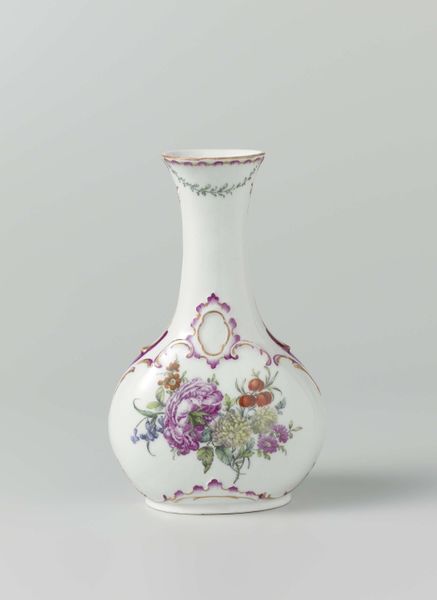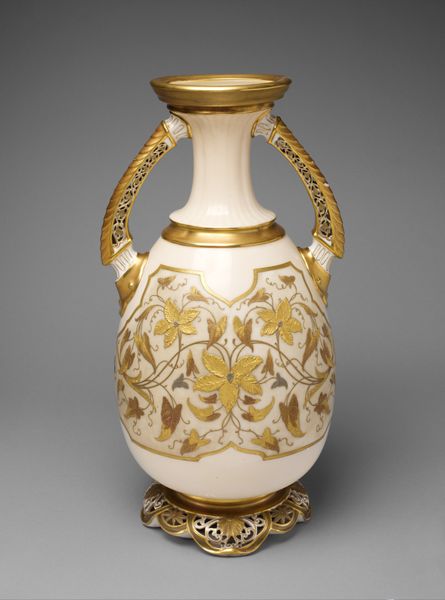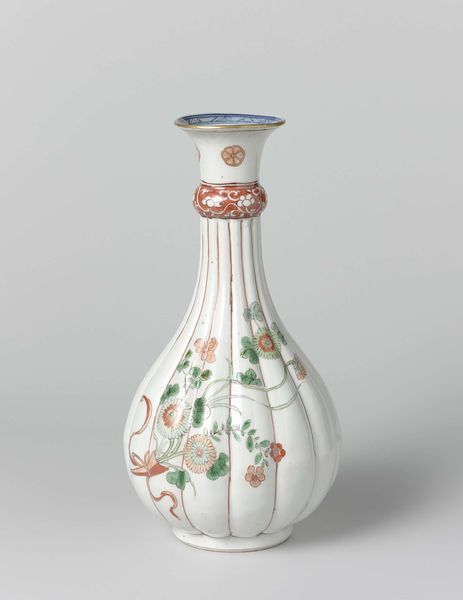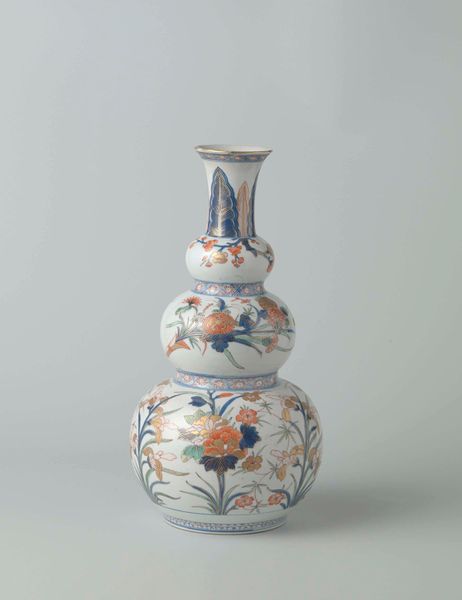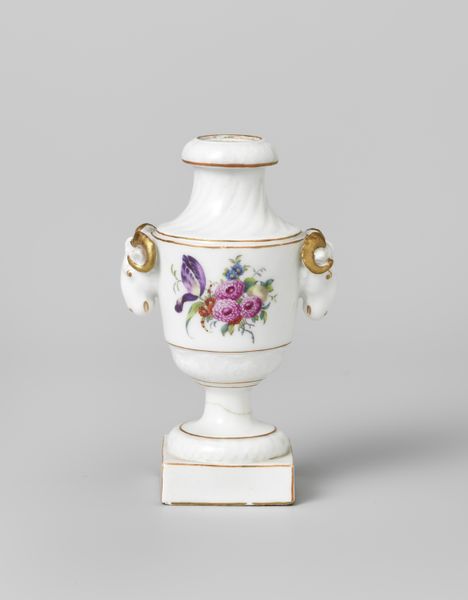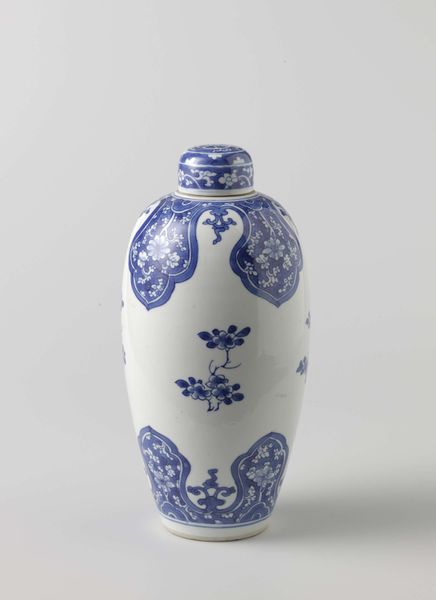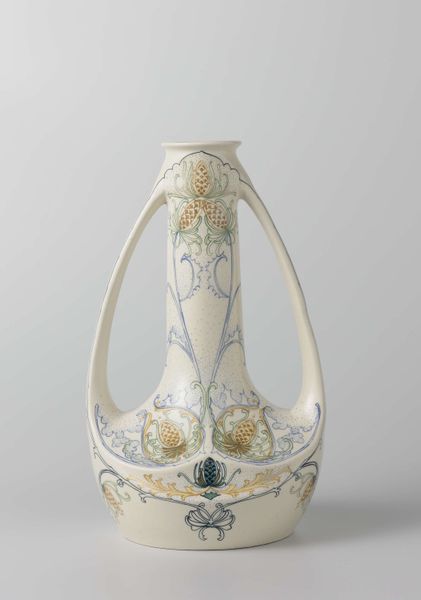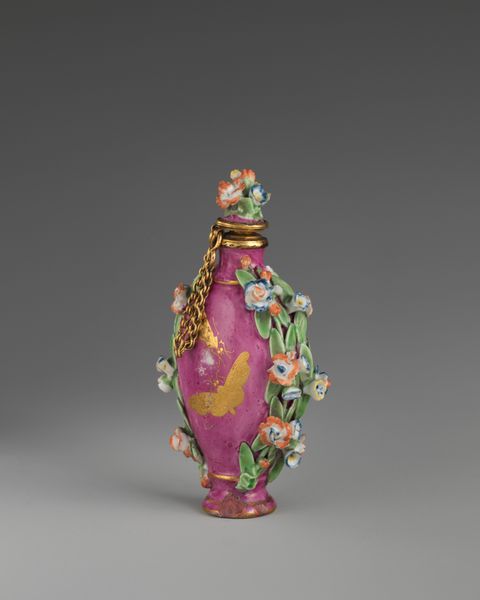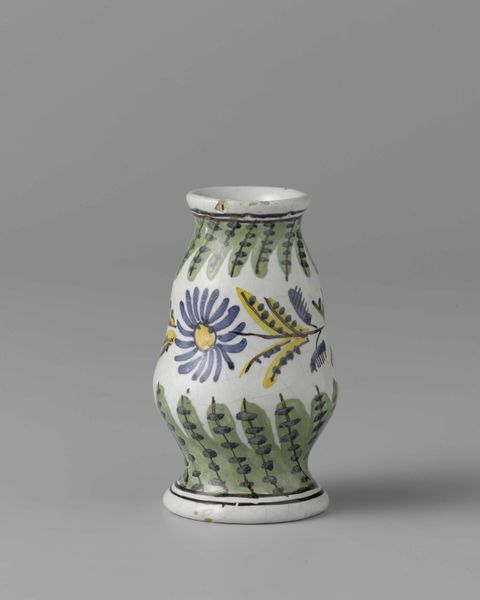
ornament, painting, ceramic, earthenware
#
ornament
#
art-nouveau
#
dutch-golden-age
#
painting
#
ceramic
#
earthenware
#
decorative-art
Dimensions: height 8.9 cm, diameter 7.5 cm
Copyright: Rijks Museum: Open Domain
Editor: So, here we have a "Vaas met bloemversiering," or "Vase with Floral Decoration," made somewhere between 1880 and 1920 by De Porceleijne Fles. It's earthenware with a painted floral design. The colors are so delicate, pale greens and yellows. What do you see in its design? Curator: Focusing purely on the formal qualities, note the carefully considered proportions of the piece. The spherical body supports a neck punctuated by repeating, geometric shapes. The chromatic range, predominantly pastel, underscores the object's overall sense of balance and refinement. Editor: It strikes me that the decoration seems intentionally simple, almost naive. It doesn’t seem to aim for realism. Curator: Indeed. The floral motifs are stylized rather than naturalistic. Consider the lines – the dark outlines that delineate each petal. These graphic contours assert the two-dimensionality of the decoration. The very act of applying paint to the earthenware transforms a functional object into an exercise in form and line. Editor: Do you think this emphasis on shape and line moves it away from being simply decorative? Curator: Precisely. The careful distribution of floral elements across the vase's surface engages with fundamental principles of design. The strategically placed, larger blooms draw the eye, while smaller details serve as counterpoints, creating a dynamic visual rhythm. Editor: It’s funny, I initially just saw it as a pretty vase. Now I see it as a careful study in composition and form. Curator: By engaging with the formal elements of the piece, we are able to see the visual interplay as a considered arrangement, not a random assortment of flowers.
Comments
No comments
Be the first to comment and join the conversation on the ultimate creative platform.
